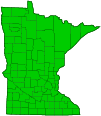red clover
(Trifolium pratense)
Conservation • Weed • Wetland • Description • Habitat • Ecology • Use • Distribution • Taxonomy
Description |
Red clover is an exotic perennial forb. It is native to Northern Africa, Europe, and Western Asia. It was widely introduced for agricultural use, has escaped cultivation, and is now widely naturalized in North America. Red clover rises on multiple stems from a taproot with rhizomes. The stems are light green, hairy, and branching. They can be nearly erect, ascending, or reclining on the ground with just the tip ascending. The leaves are alternate and compound, divided into 3 leaflets. The lower leaves are on long, hairy leaf stalks. The upper leaves are on short stalks or on no stalks at all. The leaflets are lance-shaped or egg-shaped, hairless, ⅜″ to 1⅛″ long, and ¼″ to ⅔″ wide. The margins are finely-toothed or untoothed. The upper leaf surface is silky-hairy and has a pale V-shaped marking. The inflorescence is several dense, globular, head-like clusters at the end of the stems. The flower heads are ½″ to 1⅛″ tall and about 1″ across. Each head has up to 25 to 80 flowers. There are usually 1 to 3 stalkless leaflets immediately below the flower head. The flowers are pea-like, with 5 petals organized into a banner, 2 wings, and a keel formed by two petals fused together at the tip. The banner is longer than the wings and the keel. The individual flowers are stalkless. The petals are magenta to pink to nearly white, but never red. They gradually turn darker pink to rose as they age. The fruit is a seed pod containing 1 or 2 seeds. |
Height |
1′ to 2½′ |
Flower Color |
Magenta to pink to nearly white, but never red |
Similar Species |
Alsike clover (Trifolium hybridum) stems are hairless or nearly hairless. The leaflets have no markings on the upper surface and are not indented or pointed at the tip. The petals are pale pink to pinkish-white. Crimson clover (Trifolium incarnatum ssp. incarnatum) stems are more hairy. The leaflets have no markings on the upper surface. The petals are crimson red. White clover (Trifolium repens ssp. repens) is a much smaller plant, 4″ to 10″ tall. The stems are creeping and they root at the nodes. Flowers and leaves are borne on separate stalks. The leaflets have have a pale, crescent-shaped, not V-shaped, marking on the upper surface. The petals are white or white tinted with pink. |
Habitat |
Disturbed sites |
Ecology |
Flowering |
May to September |
Pests and Diseases |
|
Use |
Red clover is an important forage crop. It has been cultivated since the third and fourth centuries. Red clover is the state flower of Vermont. |
Distribution |
||
|
Sources |
|
| 11/21/2024 | ||
Nativity |
||
Native to Northern Africa, Europe, and Western Asia. Introduced and naturalized. |
||
Occurrence |
||
Very common and widespread |
||
Taxonomy |
|
Kingdom |
|
Division |
Tracheophyta (Vascular Plants) |
Subdivision |
Spermatophytina (Seed Plants) |
Class |
|
Order |
Fabales (Legumes, Milkworts, and Allies) |
Family |
Fabaceae (Legumes) |
Subfamily |
Faboideae |
Tribe |
Trifolieae |
Genus |
Trifolium (Clovers) |
Subgenus |
Trifolium |
Section |
Trifolium |
Subordinate Taxa |
|
At least eleven varieties or subspecies (infraspecies) of red clover have been described based on habits, calyces, stipules, and patterns of pubescence. In North American populations there is much intergradation, making determining the variety of some individual plants difficult or impossible. The following infraspecies are currently recognized by at least one highly respected taxonomic source. No source accepts all of them. Some North American sources do not recognize any infraspecies. |
|
Trifolium pratense ssp. baeticum Trifolium pratense ssp. kotulae Trifolium pratense ssp. pratense Trifolium pratense var. americanum Trifolium pratense var. frigidum Trifolium pratense var. luteopurpureum Trifolium pratense var. pratense Trifolium pratense var. sativum Trifolium pratense var. villosum |
|
Synonyms |
|
Lagopus pratensis Trifolium boeticum Trifolium brachystylum Trifolium bracteatum Trifolium heterophyllum Trifolium pensylvanicum Trifolium sativum Trifolium silvestre Trifolium ukrainicum Trifolium ukranicum Triphylloides pratensis |
|
Common Names |
|
peavine clover purple clover red clover |
|
Glossary
Rhizome
A horizontal, usually underground stem. It serves as a reproductive structure, producing roots below and shoots above at the nodes.
Visitor Photos |
||
Share your photo of this plant. |
||
This button not working for you? |
||
Alfredo Colon |
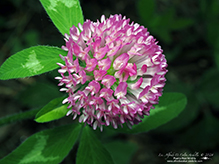 |
MinnesotaSeasons.com Photos |
||
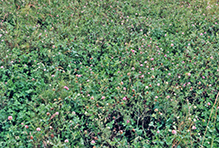 |
||
Habitat |
|
|
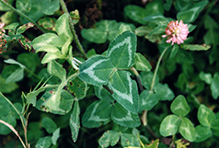 |
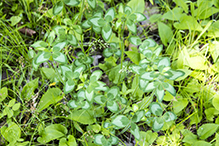 |
|
Plant |
Plant |
|
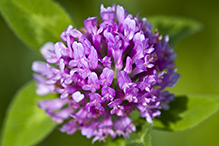 |
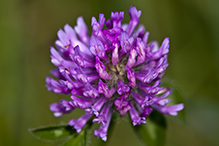 |
|
Inflorescence |
||
|
||
|
||
Inflorescence |
|
|
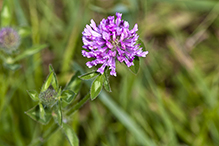 |
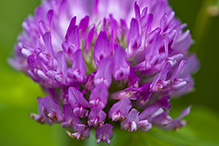 |
|
Inflorescence |
Flowers |
|
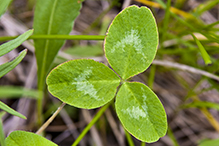 |
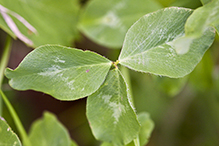 |
|
Leaves |
Leaves |

Slideshows |
Red Clover |
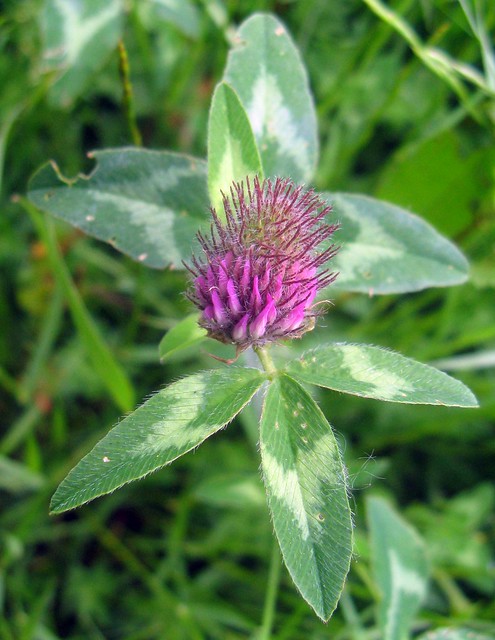
|
About
Red Clover (Trifolium pratense). |
Trifolium pratense |
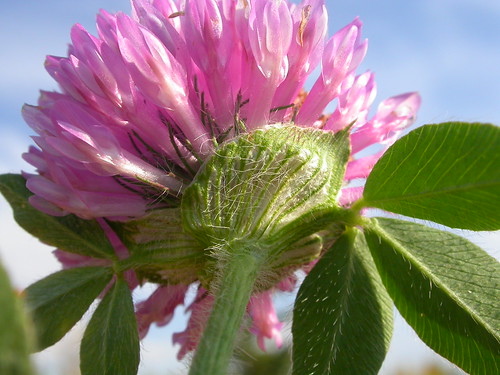
|
About
Introduced short-lived perennial, stems ascending to erect, less than 70 cm tall, leaflets serrate at least distally, the terminal leaflet is sessile (like the lateral leaflets, which is true of all Trifolium species), flowering head enveloped by stipules of subtending leaves, pod 1-few-seeded, inconspicuous and concealed by the calyx, fruiting head retains the faded dry petals (which is true of all Trifolium species), common in lawns, fields, pastures, introduced as a forage crop. |
Red Clover |
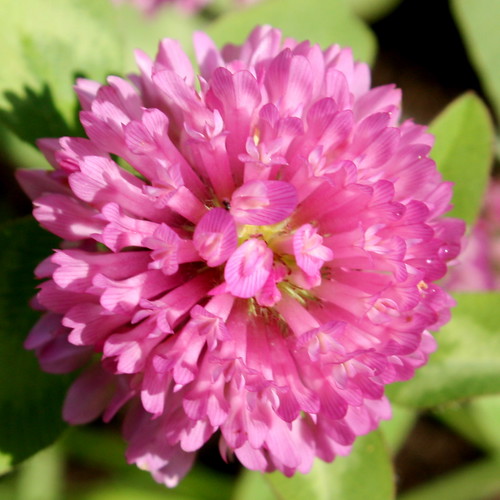
|
About
Trifolium pratense The State Flower of Vermont |
Trifolium pratense RED CLOVER |
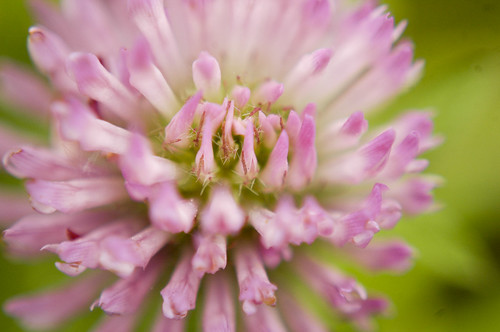
|
Trifolium pratense (with translation text) |
About
Uploaded on May 16, 2011 More information? Review: |

Visitor Videos |
||
Share your video of this plant. |
||
This button not working for you? |
||
|
Other Videos |
||
Red Clover (Trifolium Pratense) - 2012-05-05 |
About
Published on May 7, 2012 Trifolium pratense (red clover) is a species of clover, native to Europe, Western Asia and northwest Africa. --------------- |

Visitor Sightings |
||
Report a sighting of this plant. |
||
This button not working for you? |
||
Alfredo Colon |
Location: Albany, NY |
 |
MinnesotaSeasons.com Sightings |
||
Avon Hills Forest SNA, North Unit Badoura Jack Pine Woodland SNA Bertram Chain of Lakes Regional Park Blazing Star Prairie Addition Preserve, South Unit Carpenter St. Croix Valley Nature Center Charles A. Lindbergh State Park Clifton E. French Regional Park Forestville/Mystery Cave State Park Itasca Wilderness Sanctuary SNA John Peter Hoffman Spring Brook Valley WMA Mary Schmidt Crawford Woods SNA Minnesota Valley NWR, Louisville Swamp Unit Minnesota Valley NWR, Rapids Lake Unit Minnesota Valley NWR, Wilkie Unit Minnesota Valley State Recreation Area, Lawrence Unit Mound Spring Prairie SNA, North Unit Nerstrand Big Woods State Park Northern Tallgrass Prairie NWR, Rengstorf Unit Northern Tallgrass Prairie NWR, Touch the Sky Prairie Unit P.N. and G.M. Nelson Wildlife Sanctuary Pembina Trail Preserve SNA, Crookston Prairie Unit Prairie Creek WMA, Koester Prairie Unit Robert Ney Memorial Park Reserve Sand Prairie Wildlife Management and Environmental Education Area Spring Beauty Northern Hardwoods SNA Stanley Eddy Memorial Park Reserve Two Rivers Aspen Prairie Parkland SNA Verlyn Marth Memorial Prairie SNA |

|
Created: Last Updated: © MinnesotaSeasons.com. All rights reserved. |
